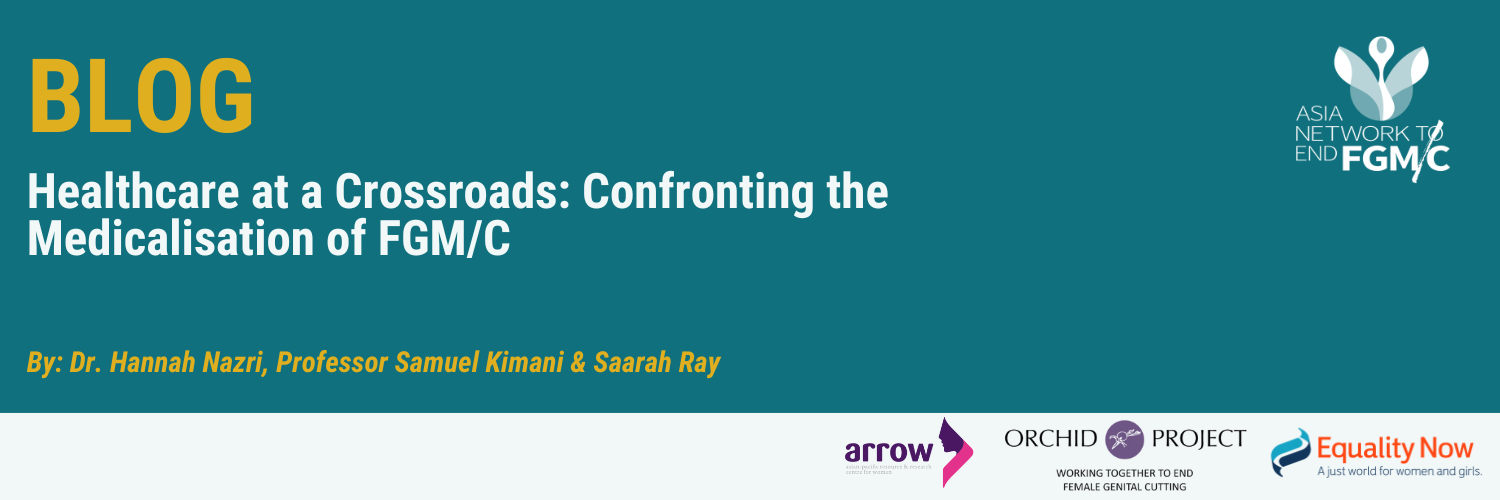The medicalisation of Female Genital Mutilation/Cutting (FGM/C), where the procedure is performed by healthcare professionals, has complicated global efforts to eradicate this harmful practice. Rather than ending FGM/C, medicalisation risks legitimising it under the guise of clinical safety. These concerns were first raised during the April 2025 webinar hosted by the Asia Network to End FGM/C and Equality Now, which brought together experts from Asia and Africa to discuss the roles healthcare professionals play in perpetuating or preventing FGM/C.
This follow-up discussion explores how legal frameworks, medical ethics, and debates around female genital cosmetic surgery (FGCS) intersect with ongoing efforts to address FGM/C.
Medical Ethics and Legal Contradictions
In the UK, the Female Genital Mutilation Act 2003 criminalises excision, infibulation or other mutilation of a girl’s or woman’s genitals, including adult procedures. It permits exceptions only when medically necessary, such as during childbirth. Despite this, FGCS is legally offered to adult women and often promoted as enhancing sexual, gynaecological or mental health.
This duality exposes contradictions in how the law distinguishes between cultural harm and personal choice. Medical ethics face similar tensions. Healthcare professionals are tasked with protecting health, yet may accept patient consent at face value without examining the patriarchal narratives that shape such decisions.
Is Female Genital Cosmetic Surgery a Form of FGM/C?
Saarrah Ray, a DPhil in Law candidate at the University of Oxford, challenges the separation between FGCS and FGM/C. In her thesis, she frames FGCS as a form of violence against women and argues for its recognition as a variant of FGM/C. In Sister, Is this Mutilation? she writes:
“It is worth appreciating that FGCS and FGM seem not so disanalogous if we take seriously the depth and harm of socio-cultural pressures, deriving from a shared system of women’s oppression, that inform women how to feel what their vulvas and vaginas should look like and whom they service.” (Ray, 2024)
Ray questions whether women’s consent to FGCS, often influenced by beauty myths, pornography and self-objectification, can be ethically relied upon by medical professionals. For instance, if a woman undergoes vaginal tightening to satisfy a partner, her satisfaction may not reflect autonomous decision-making but internalised gender norms.
This argument raises critical questions for both law and medicine. Should healthcare systems permit procedures rooted in oppressive social expectations? And should the law continue to draw rigid lines between culturally sanctioned FGM/C and socially accepted FGCS, when both may stem from the same systems of control?
The medicalisation of FGM/C, and the rise of FGCS, expose gaps in both legal and ethical frameworks. As highlighted in the April 2025 webinar, addressing these issues requires more than legal bans, it demands a deeper interrogation of consent, culture and power. When procedures rooted in patriarchal norms are reframed as healthcare, both medicine and law must respond with clarity, accountability and a commitment to women’s rights.
Speaker Profiles
Professor Samuel Kimani
Associate Professor, Faculty of Health Sciences, University of Nairobi. With over 20 years of experience in global health, medical training, and research, Professor Kimani is a leading expert on FGM/C in Africa.
Dr Hannah Nazri
NIHR Academic Clinical Fellow in Obstetrics & Gynaecology, University of Warwick. Director of Malaysian Doctors for Women & Children. Dr Nazri works internationally to end FGM/C through education, policy engagement, and healthcare leadership.
Saarrah Ray
DPhil in Law candidate, University of Oxford. Saarrah’s thesis explores radical feminist legal arguments reconceptualising Female Genital Cosmetic Surgery as a form of violence against women and a variant of FGM/C.
References:
Ray, S. (2021). The Husband-Stitch: Could it be Female Genital Mutilation?. Available on: https://www.durham.ac.uk/research/institutes-and-centres/ethics-law-life-sciences/about-us/blogs/obstetric-violence-blog/the-husband-stitch/
Ray, S. (2024). Sister, Is this Mutilation?. Fem Leg Stud 32, 357–359. https://doi.org/10.1007/s10691-024-09553-0







